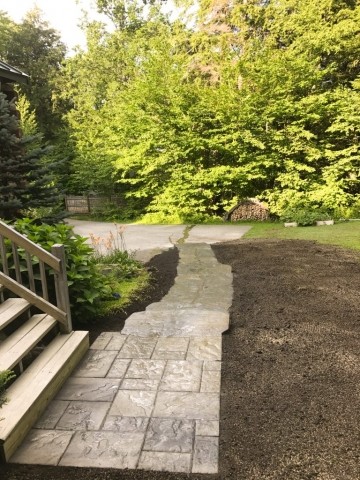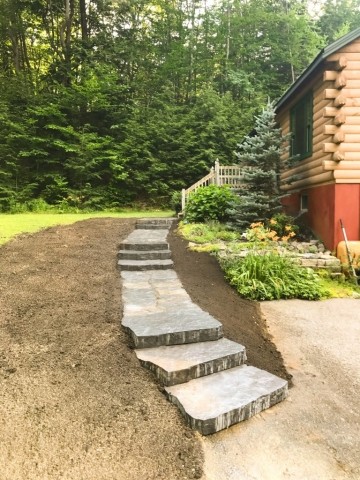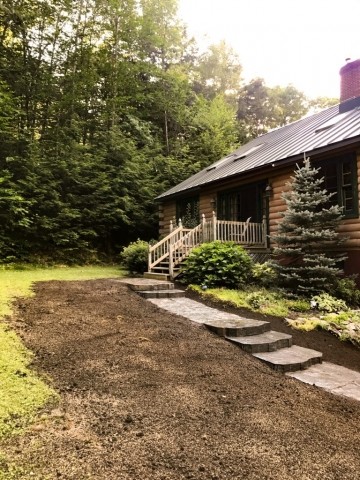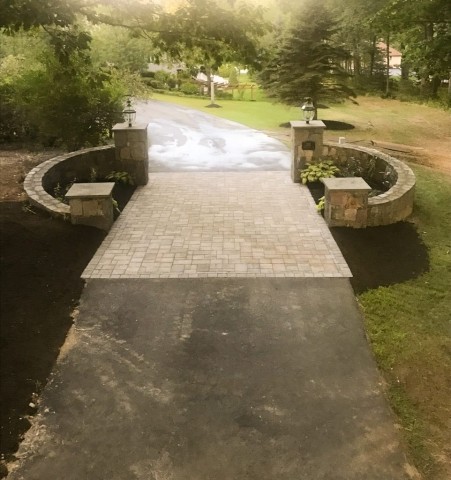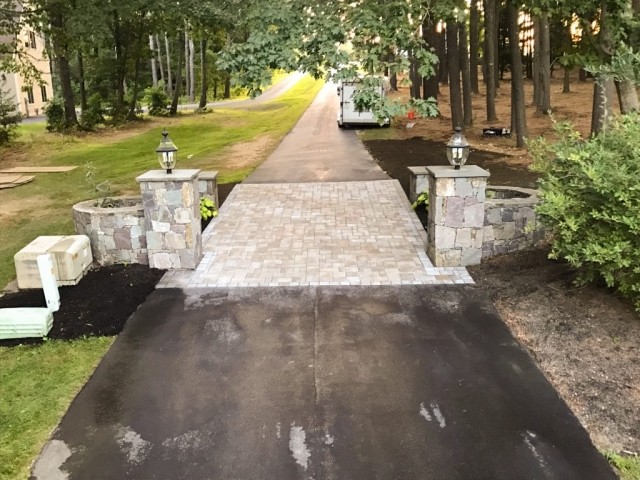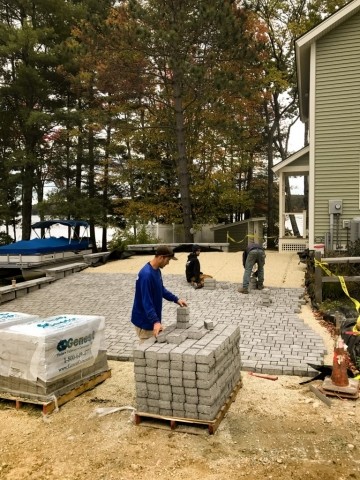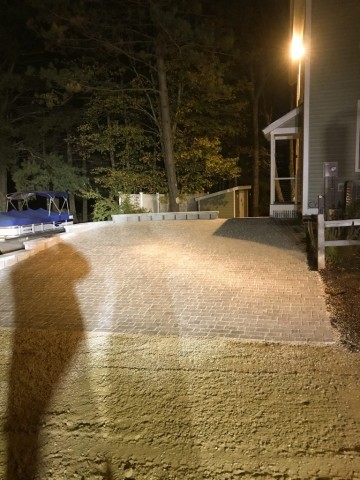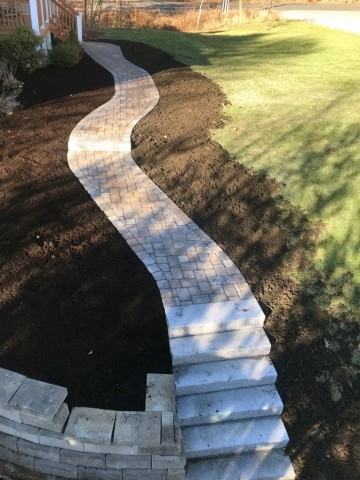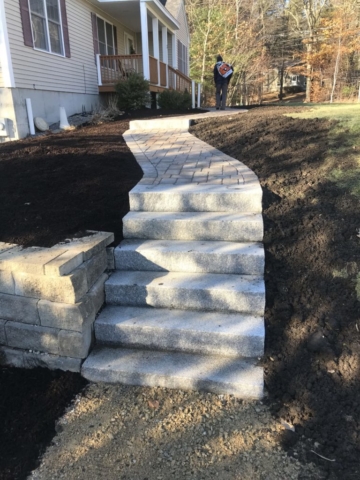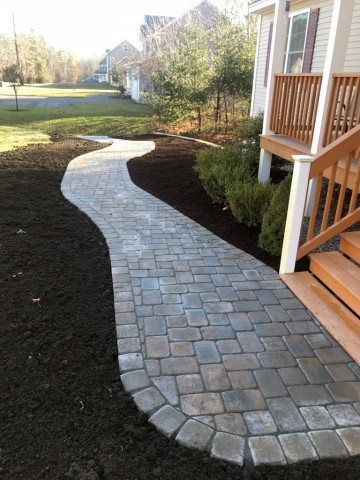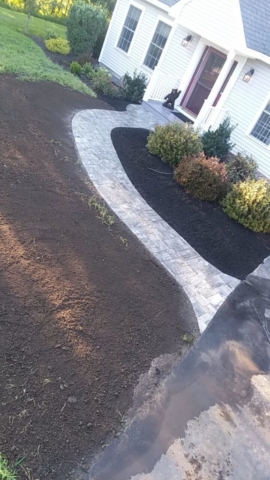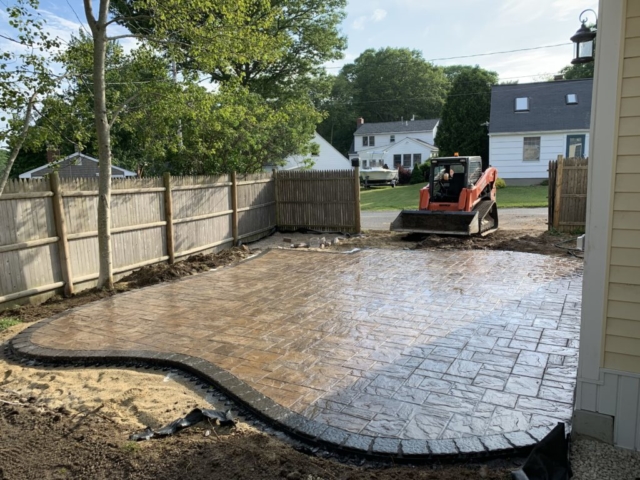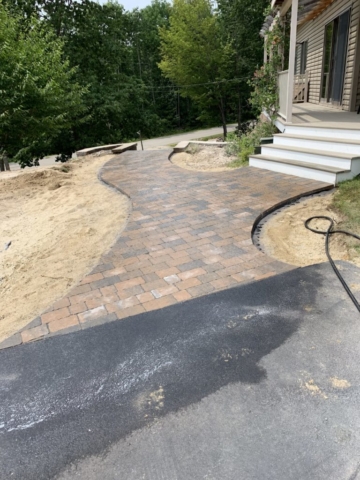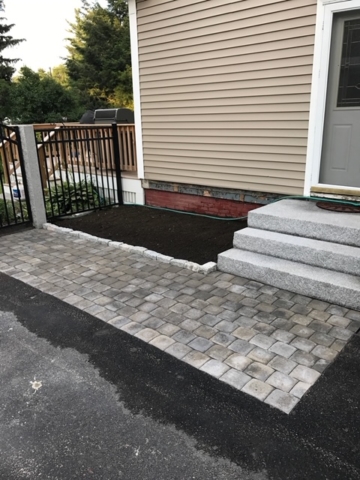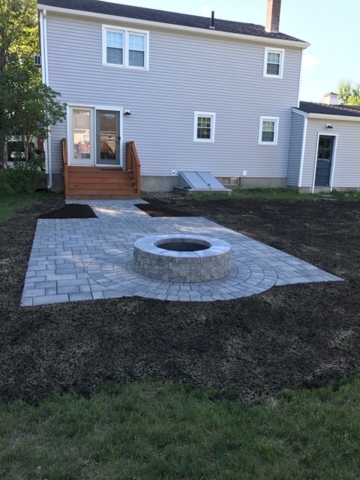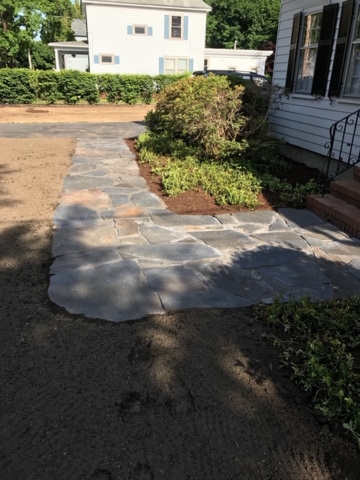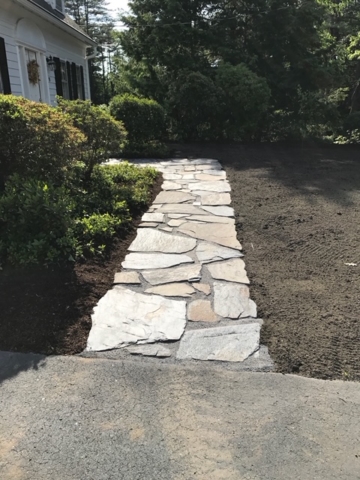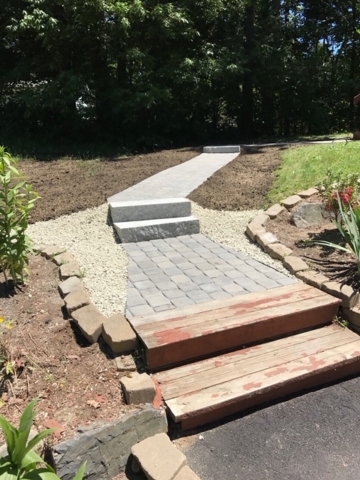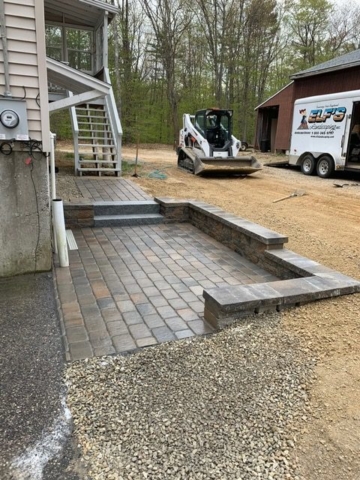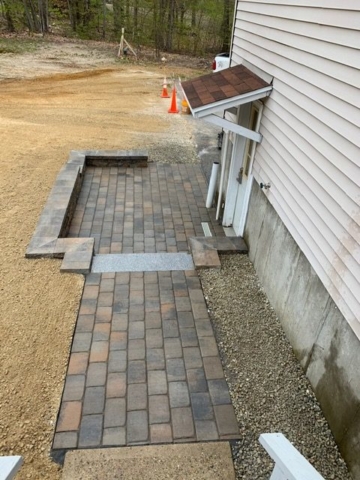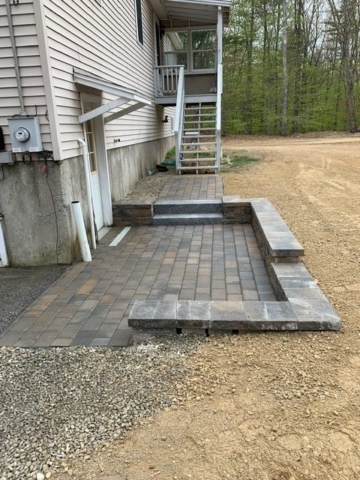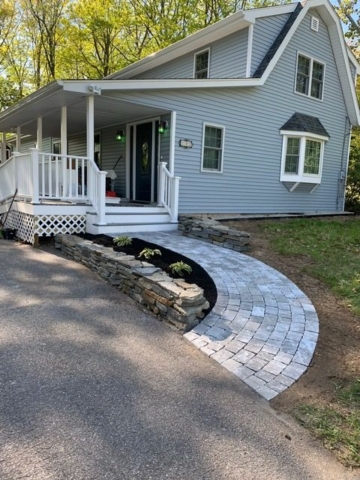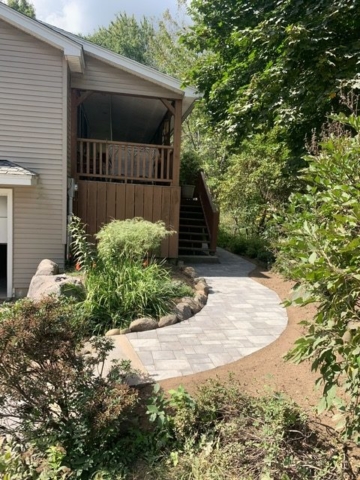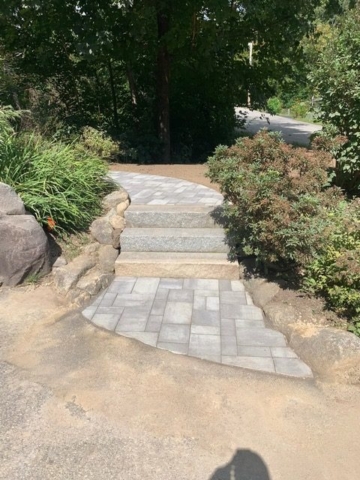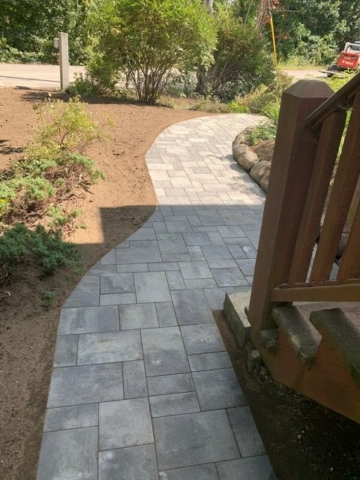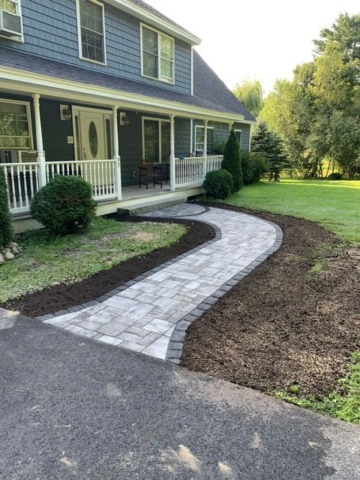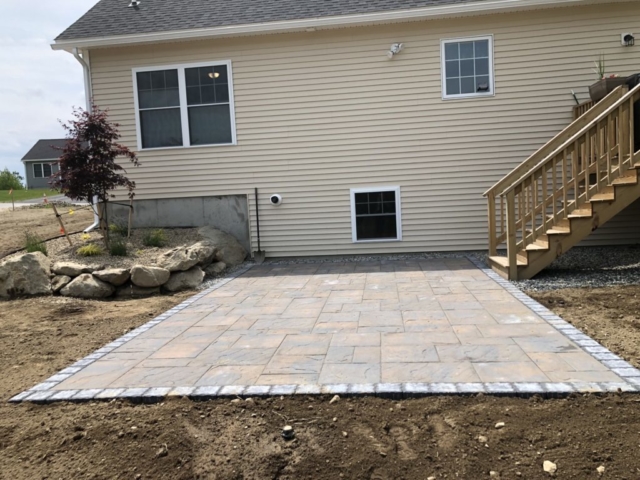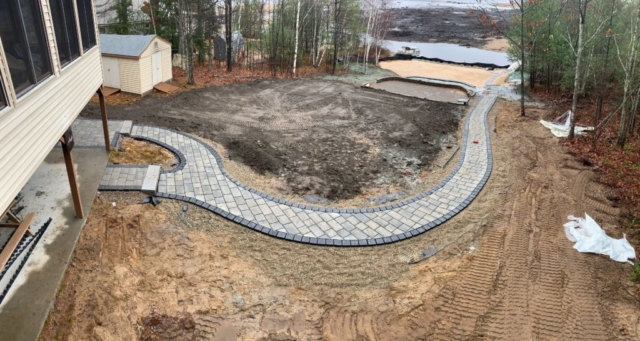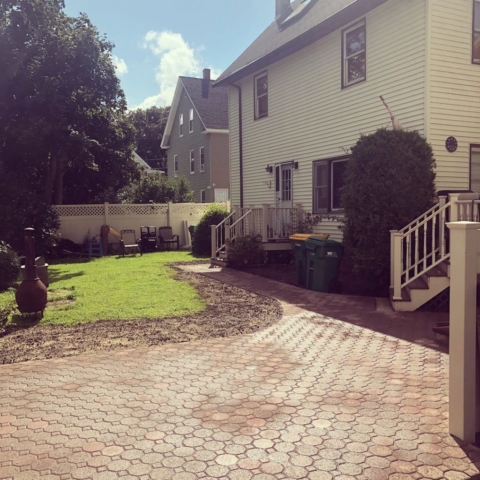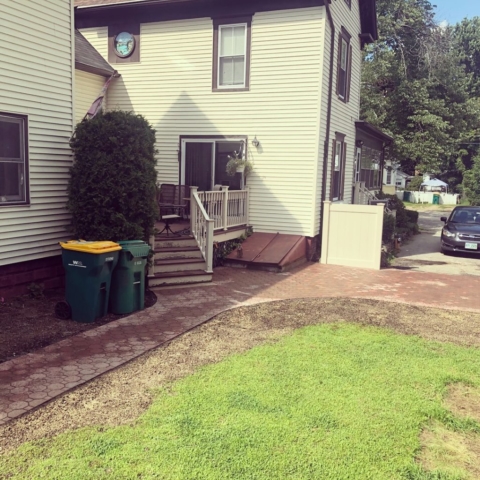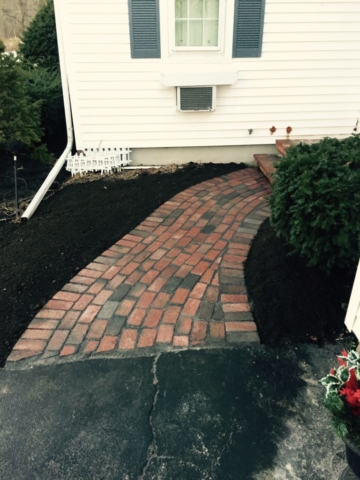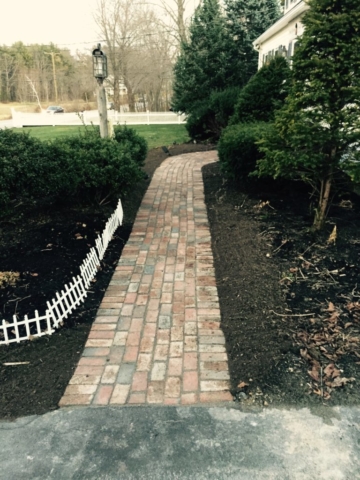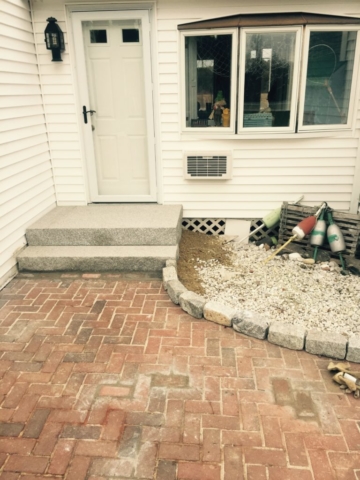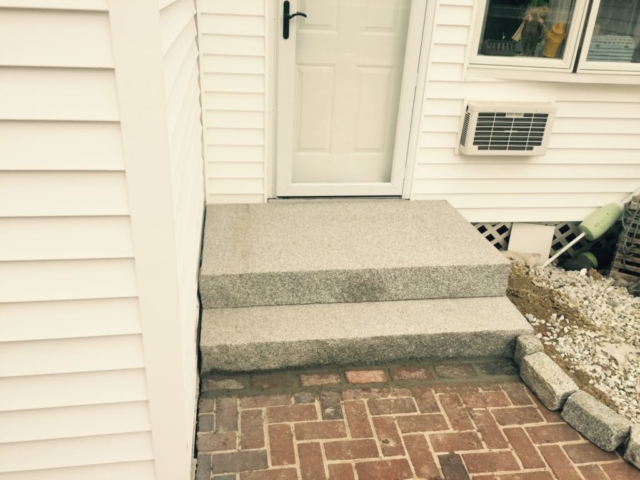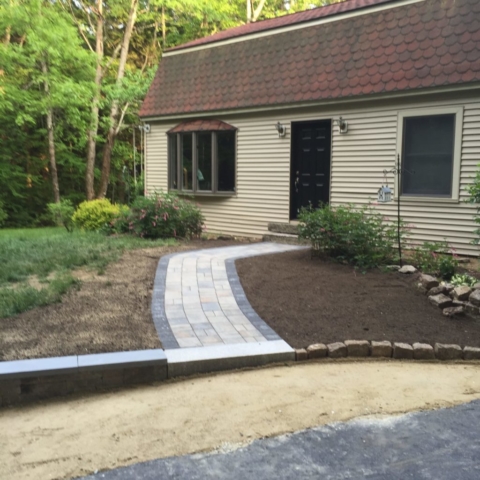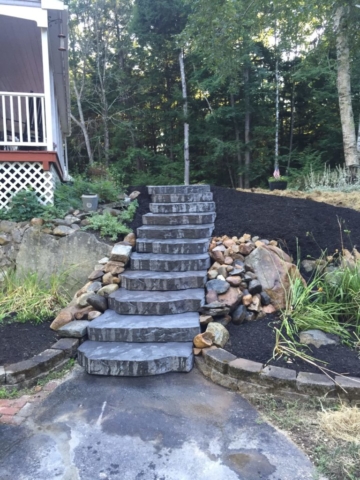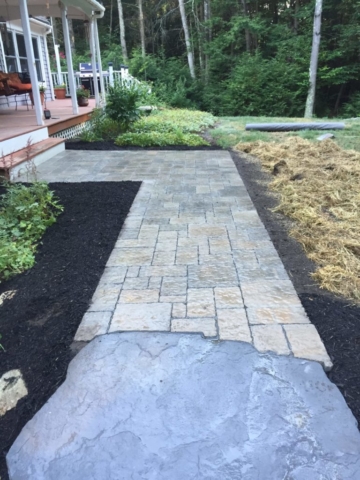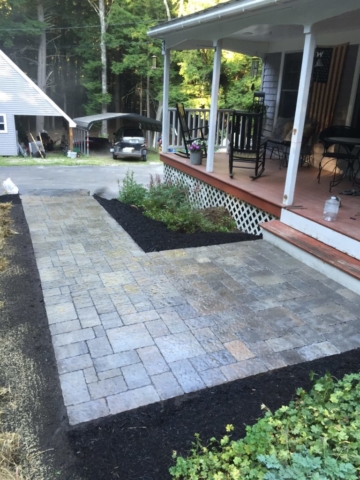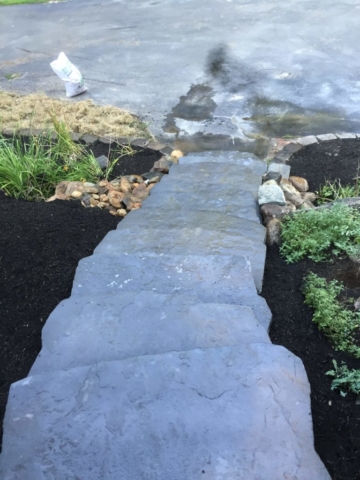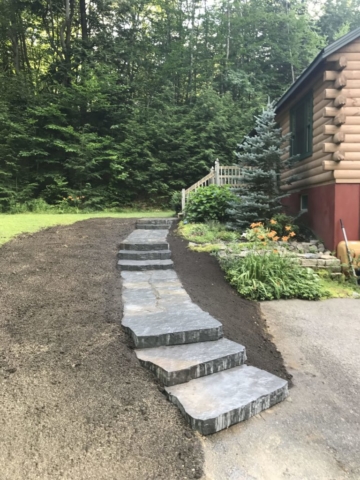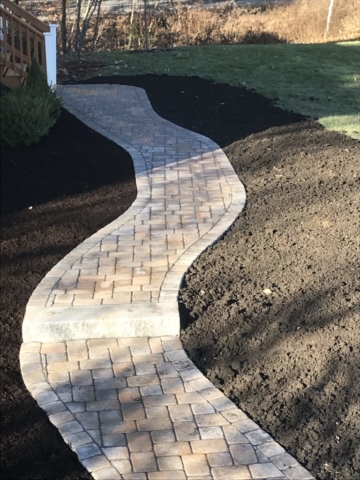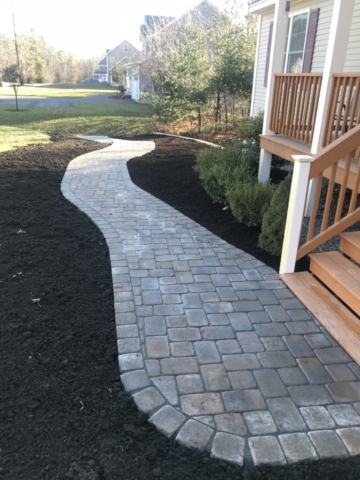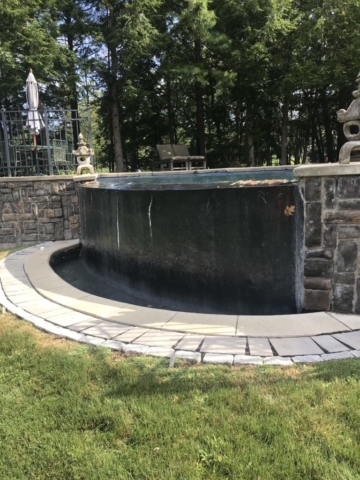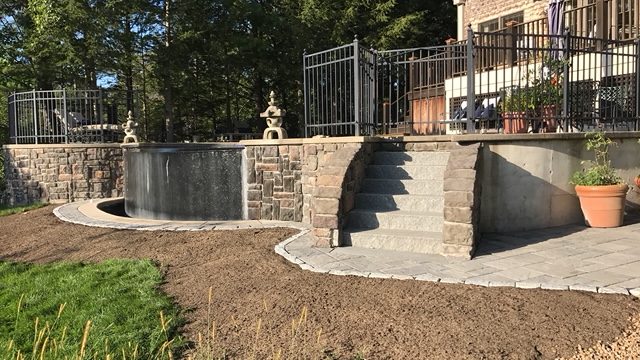
One of the most popular landscaping projects that homeowners hire a landscape company to do is the installation of brick patios and walkways. Commonly known in the industry as “hardscaping,” patios provide the floor of an outdoor room, a gathering area for guests, outside dining, or a quiet retreat for couples after the kids have gone to bed. A walkway invites guests to your home, providing a safe walking surface and aesthetically adding a hard border for the soft plant material in your yard.
We have been installing concrete pavers and natural clay brick patios since we started our business. Back then, there were only a few choices of patterns and colors for your patio. Today there are dozens of concrete paver manufacturers with virtually every color blend to match your home siding and style. Concrete pavers are a great way to introduce elegance to your yard that lasts for many years.

Having a concrete paver patio or walkway that lasts depends on how well the base is constructed. It is a terrible thing to go through the expense of having a walkway or patio installed by an installer that is inexperienced, only to have to pull the whole thing up in two years as it settles and sinks. We install our patios according to the International Concrete Paver Institute, (ICPI) guidelines.
ICPI is an independent organization that sets the standard of proper concrete paver construction based on years of scientific testing. Their research has transformed an industry that was, for many years, subject to stonemasons or gardeners installing patios the way they “felt” was right. For example, stone dust was a popular base material that was used under brick pavers even up to 10 years ago, but it does not make a stable base for your patio. Stone dust, however, is just that- “stone” and “dust.”
The “stone” size is inconsistent, and the “dust” (also known in the industry as “fines”) does not allow for water to pass through. This causes the walkway or patio to settle or heave after one or two winters.
